Parental Anxiety: How to Manage It and Avoid Passing It to Your Children
My struggle with anxiety well preceded my journey into parenthood. In fact, anxiety has been my constant companion since I was a little girl, but it intensified to an entirely new level once I became a parent. I remember my dad always saying to me, “Worrying is a waste of your time and energy. Most of the things you worry about probably won’t happen anyway… and if they do, I bet you can handle it.”
I knew he was right; yet, his words never helped because my worry wasn’t logical. In fact, more often than not, it was downright illogical. My brain and body often cannot make the distinction between a real threat (e.g. my kids running onto a busy street) and a perceived one (e.g. what if my child gets a cold before a trip). Cue the fluttering heart, jittery stomach and the racing, intrusive thoughts.
The thing about my anxiety – and anxiety in general – is that I see the worst-case scenario in every situation. And as a parent, constantly planning for the worst possible outcome (along with the lack of sleep, all the hormonal fluctuations, the huge couplesome-to-parenthood transition, and the pressure to be a good… nay, perfect parent) can really wreak havoc on your sanity and overall health.
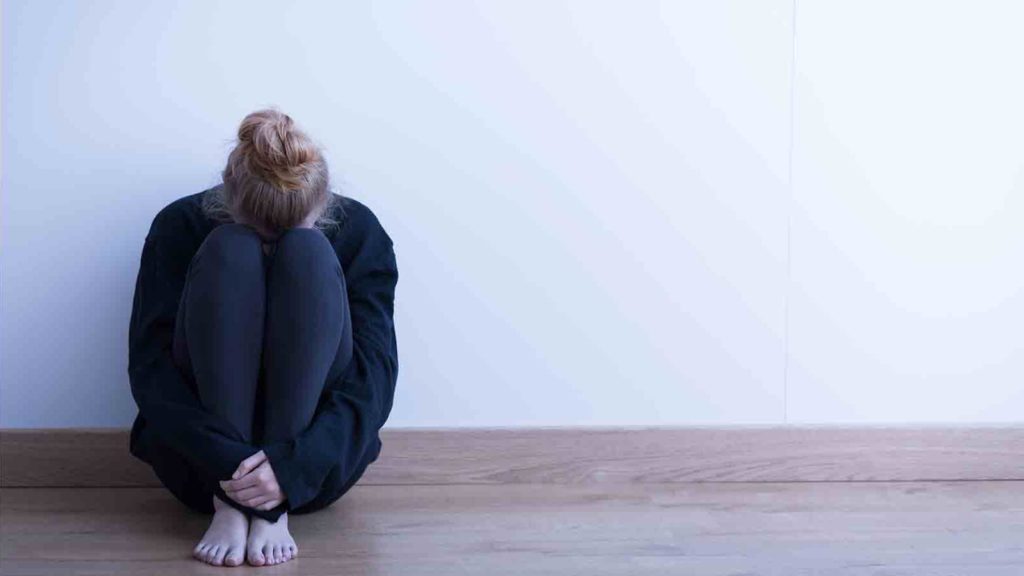
But the thing that really threw me over the edge (and as it happened was also my first dose of heavy “mom guilt”)? The fear that I might pass this affliction down to my child.
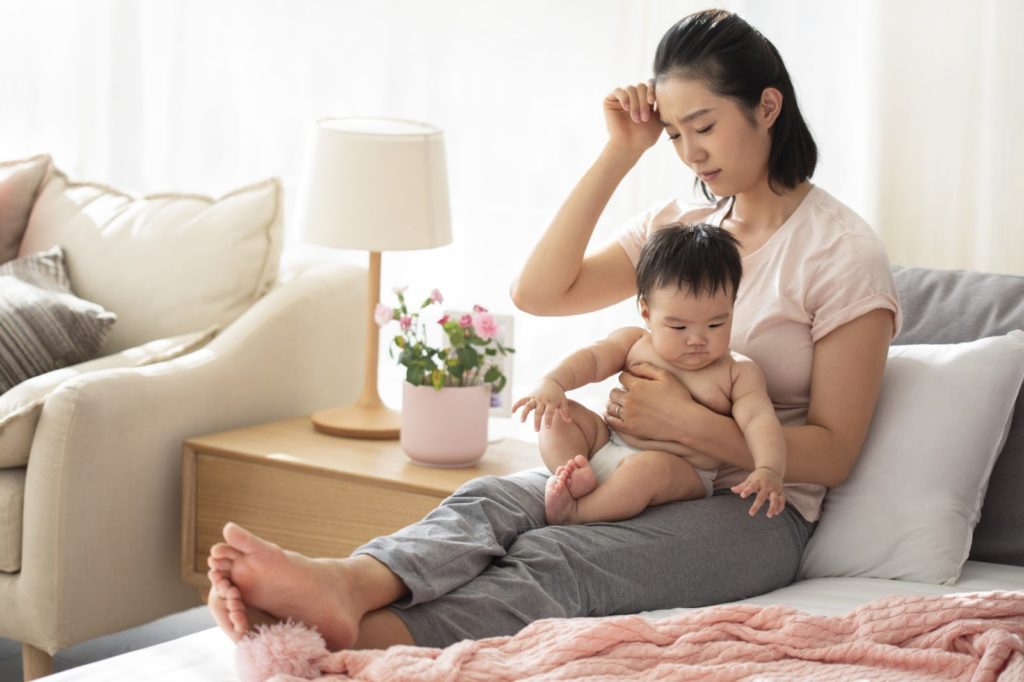
Approximately 40 million adults in the United States struggle with anxiety. Moreover, anxiety has a genetic heritability rate of about 30-67 percent. In addition to genetics, our children can also “learn” anxiety through our own behavior and the ways in which we respond to stressful situations. But even if you, your partner, or both of you suffer from anxiety, this does not mean your children are destined for a lifetime of worry.
In this article, we talk about anxiety: what it is, how it functions, the difference between functional and dysfunctional anxiety – as well as the ways in which we unknowingly model it, and perhaps even teach it, to our kids. Finally, we’ll offer you tips on how to manage your own anxiety and avoid passing it on to your children. Let’s get started.
Anxiety Overview –
What Is It, What Causes It and the Difference Between Functional and Dysfunctional Anxiety
In a nutshell, here’s what happens when we worry: It all starts with a “trigger” event. This could truly be anything from learning that your friend’s child fell from the monkey bars and fractured his arm, to the memory of being bitten by a dog when you were younger, to watching a local news story about an uptick in crime in your area.
That trigger event then causes us to have worried thoughts. The more we worry about that trigger event, the more dangerous our brain perceives it to be. Thus, each time we encounter or think about it, our worry gets bigger and bigger.
Finally, those worried thoughts spawn a physical response in our bodies (i.e. racing heart, sweaty palms, tummy ache, etc.) which causes us to become even MORE worried. Even if we aren’t in any REAL risk, our amygdala thinks we are in real, actual danger, and tells our body to react accordingly.
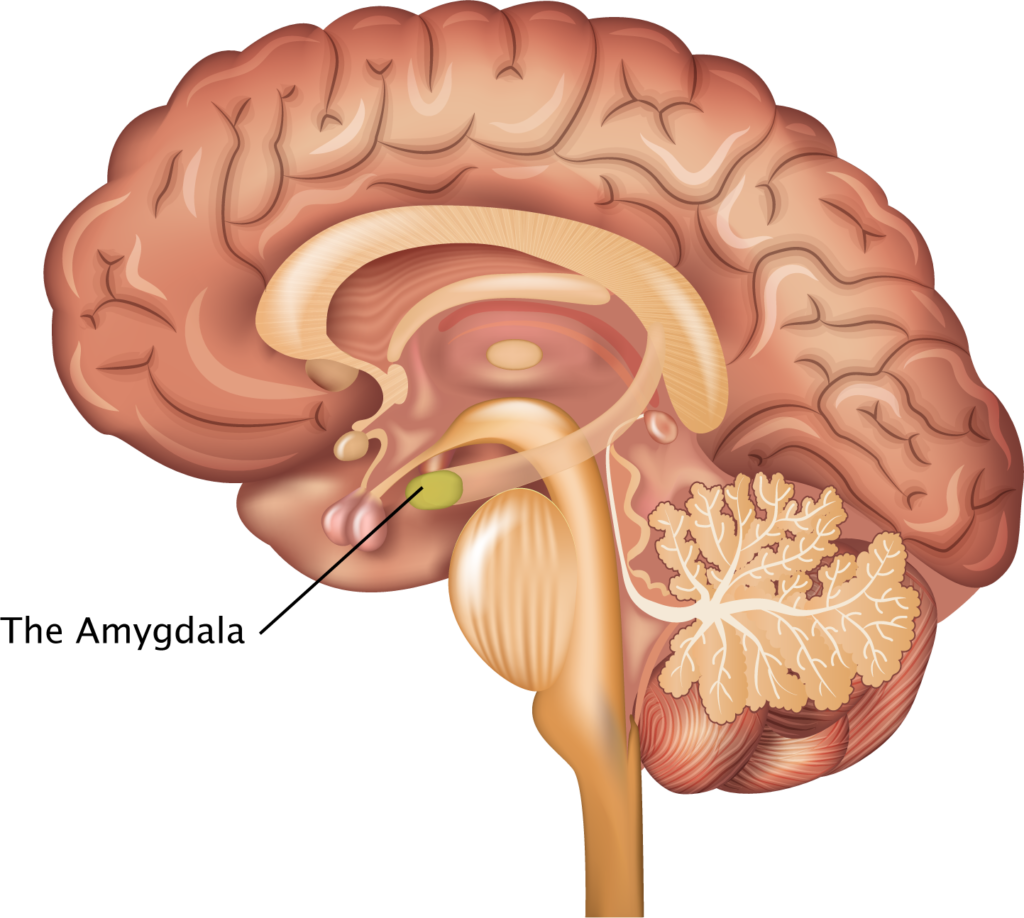
Adaptive vs. Dysfunctional Anxiety
But here’s the thing: not all anxiety is bad. In fact, worry and fear serve an evolutionary and protective purpose – they’ve helped the human race survive. Feelings of worry, and the physiological responses that prepare us for fight or flight are what urge us to run from the bear, stay aware of our surroundings when we feel unsafe, or (in modern times) prepare for that big presentation at work. This is called adaptive anxiety. And when that situation is over – we outran the bear, we arrived at a safe place, we nailed the presentation – our anxiety dissipates and we once again return to a calm state.

But when and if we are not able to return to that calm state, this is when our anxiety becomes dysfunctional. Our amygdala signals alarm bells often because it perceives danger and threats everywhere and we end up living in a state of heightened arousal – always ready to fight or flee. (And by the way, the amygdala can’t decipher the difference between the threat of being chased by a bear and, say, your mother-in-law calling to express disappointment in your parenting techniques… though one is life-threatening and the other is not, both nerve-wracking situations will elicit the same physical response.)

Chronic anxiety can lead to long-term health issues. According to the American Psychological Association, when our heart rate, blood pressure and stress hormones are consistently elevated, we are at greater risk for suffering from hypertension, a stroke or a heart attack.
Why Being Overly Anxious in Front of Our Children Is a Problem
Before we go into this, know that there’s no judgment or shame intended here. We’re discussing this topic because it’s something so many of us struggle with, including three of us here at Lucie’s List.
That said, here’s why we really should work on it: as we discussed in our piece on childhood anxiety, children can sense when their caregivers are anxious or worried. According to a study published in Psychological Science, this is true even for infants (infants!). Researchers leading the study noted that when moms were stressed, their babies also became stressed and even emulated their mom’s physiological responses (i.e. a quickening heart rate). Fetuses in the womb can also sense their mother’s anxiety, and fascinatingly, studies show that stress can even be passed intergenerationally.
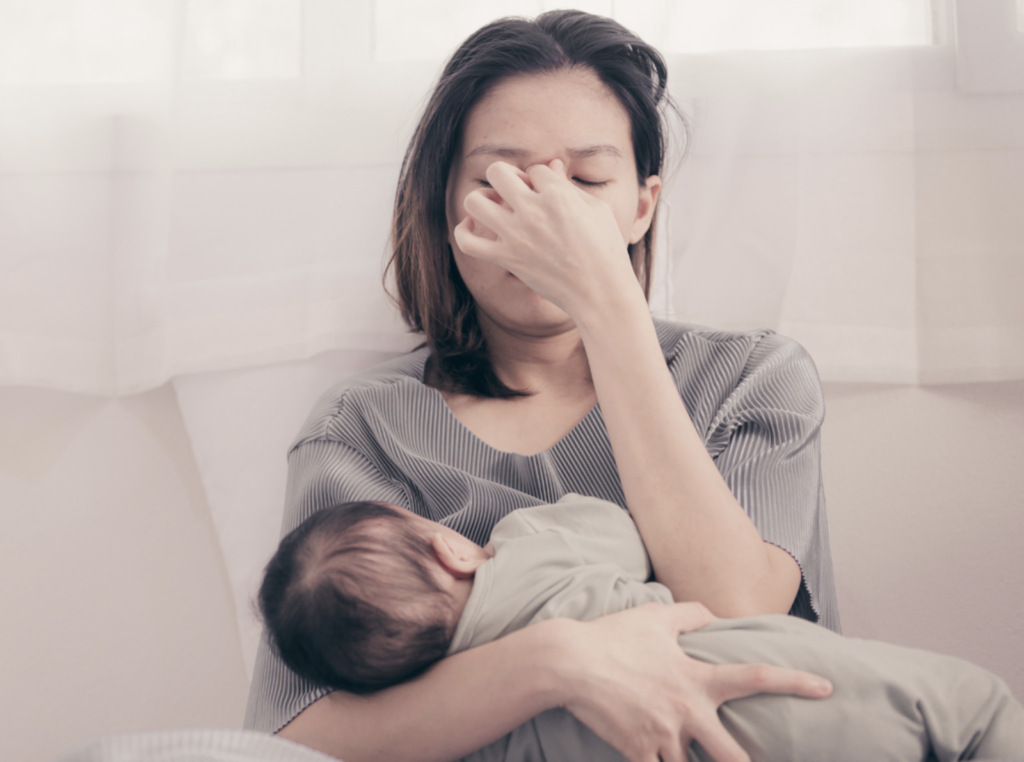
Quite literally, anxiety can be “catching” or contagious. We all feed off the energy of others, especially our caregivers, and so when parents respond anxiously to a variety of situations (or, like me, tend to catastrophize and see threats everywhere), not only do our kids feel it, but they’re also taught (unintentionally) that the world is a scary and dangerous place, and that they too should feel worried.

In addition, anxiety makes us rigid and afraid to go “off script,” so to speak. We anxious parents like to make and follow a plan – this could mean being extremely rigid with mealtimes, bedtimes, snack offerings, and everything in between. While it’s certainly not bad to have a schedule or plan – after all, kids thrive off routine and boundaries – it is important to be flexible and able to change course if need be. When we’re able to go with the flow (even if it’s just a little bit…) we show our kids how to be adaptable, resilient and that it’s not a catastrophe if things don’t go exactly to plan.
The Difference Between Anxiety and an Actual Safety Concern
There is a big difference between nervously yelling, “be careful!” every time your child climbs up any structure on the playground, and loudly shouting “STOP!” when they run into a busy street: the former is our own anxiety about the possibility of our children falling and hurting themselves (our own catastrophic, worst-case-scenario thinking), while the latter is an actual safety concern.

The reason we don’t want to respond in the same manner to both types of situations is because we want to reserve the big, bold responses for when our kids actually are in real danger – like running into oncoming traffic or jumping into a pool when they don’t know how to swim.
If we react this way all the time, we run the risk of a) teaching our children to be fearful of everything, and b) desensitizing them to listening to us and understanding what they really need to be wary of (i.e. walking away with a stranger, etc.).
So next time you feel yourself on edge about something your child is doing, take a breath and ask yourself, “is this my anxiety piping up, or is this a real, actual safety concern?”
If it’s anxiety, you can work through it (we’ll offer tactical guidance on how to do that in a moment); and if it’s a legitimate safety concern, then yes, a big, bold response is definitely appropriate.
Now that you’ve read all this, I know exactly what you’re thinking. You’re worried that passing your anxiety to your children is inevitable – that there’s no way around it.
Not so!
In fact, passing anxiety down to our children is entirely preventable, and we’re going to tell you how. It starts with working on managing your own anxiety and fears (dunh-dunh-dunhhh).
Tips & Tricks for Managing Your Own Anxiety
Here are six tips on how to manage your own anxiety:
- Learn the Facts. Understanding the facts (and knowing what to expect in a given situation) can help mitigate our fear about that thing.
For instance, many new parents are understandably worried about SIDS (Sudden Infant Death Syndrome). So much feels out of our control when we have a newborn, and the risk of SIDS can make putting your infant down to sleep feel terrifying. In this case, once we learn the facts about SIDS, and understand the steps we can take to diminish the risk, we may begin to feel less anxious because we’re exerting some control over the situation. More often than not, facts help to combat fear.
- Exposure therapy. This is a psychological treatment done in therapy that slowly and methodically exposes you to the thing you are fearful of (i.e. dogs, swimming, public speaking, etc.). The goal is that with each exposure, your anxiety about that thing begins to decrease. Though it may sound scary, it works; according to Psychiatric Times, those who participated in exposure therapy studies reported a 90% decrease in their anxiety symptoms and a 65% decrease in their phobia.
- Challenge your thoughts. This idea comes from Cognitive Behavioral Therapy. Either with a therapist, or on your own, ask yourself the following questions: What’s the likelihood of [fill in the blank] happening? Has it ever happened to me before? Do I know anyone this has happened to? If it did happen, could I handle it? What would I do? What would I tell someone else to do? This helps shift your mindframe from negative and/or catastrophic thinking into more healthy and effective ways of thinking and problem-solving. It also helps to remind you that you’re not helpless; you have some control over your worry.
- Talk to other parents. Reach out to others in the same stage of parenthood. Not only will talking through your worries with other parents help you feel less alone, but you’ll likely gain some new tools and strategies for managing the things you feel most anxious about.
- Take action on things you CAN control. If you’re worried about a house fire, create a fire safety plan, practice fire drills in your home, and have a fire extinguisher on every floor of the house. Take action where you can.
- Facing fears builds resilience. When we face and overcome our fears, we grow more resilient. The same goes for our children. And by modeling this for them, they learn that they too are capable of working through their fears and becoming stronger for it.
- See a therapist who specializes in anxiety. I cannot stress enough how helpful therapy can be when it comes to managing anxiety. In addition, antidepressant and anxiety medication can also be extremely beneficial. Personal story: My anxiety was so bad for so long that I truly felt helpless. Once I started taking Lexapro, however, my level of anxiety finally calmed to a manageable level where I was able to actually learn and implement effective anxiety-management tricks and tools (i.e. challenging my negative thoughts, deep breathing, facing my fears, etc.).
How to Avoid Passing Your Anxiety to Your Children
In addition to managing your own anxiety, here are eight ways to avoid passing your anxiety onto your children:

- Know it’s OK to be a “good enough” parent. Let go of the notion of perfection. It doesn’t exist. You’re doing the best you can, and your best is good enough — in fact, often, less parenting does more for our kids.
- Don’t hide your worry. It might seem counterintuitive, but it is okay to share your worries with your kids as long as you do so in a healthy, productive manner. For instance, you can say, “I’m worried about this thing that might happen, but if it does, I know I can handle it.” Or, “I’m feeling worried about ‘x,’ but the likelihood of it happening isn’t very high so I’m going to work on letting that worry go.” It’s great for kids to have their parents be open and honest about their own fears, and then model healthy ways of coping.
- Model mindfulness techniques. When you’re feeling anxious, utilizing mindfulness techniques in front of (or even with) your child, such as deep breathing, stepping outside for some fresh air and taking a break to observe the sights, scents and sounds around you, helps teach them healthy ways of working through their own feelings of anxiety and worry.
- Do things that make you nervous. When your children see you facing your own fears, it teaches them that they can do it too. (Note that you have to abide by #2 in order to reap this benefit fully, hah.)
- Don’t catastrophize. If your child is climbing a tree, do you find yourself wanting to shout, “you’re going to fall and crack your head open and DIE!”? If you’re visualizing the worst-case scenario in a given situation, take a beat before you react. Try to challenge your thoughts – what if that thing DOESN’T occur? And if it does, can I handle it? – and then react in a more effective manner. When we catastrophize everything, we teach our kids to do the same.
- Allow your kids to fail – and fall. It may seem like the worst thing ever for your child to fail at something, but this couldn’t be farther from the truth; though it certainly doesn’t feel good to watch our kids struggle, when we allow them to make mistakes – to fall down and get back up again – we are gifting them the opportunity to learn through natural consequences, gain experience problem-solving, and build resilience, confidence, and independence.
And, as previously mentioned, it’s important to understand the difference between an actual life/death situation, such as young kids swimming unattended, versus a situation where a small/manageable accident could occur, like a child climbing a fence. The former could result in death, while the latter could result in a minor/manageable fall (and even a learning experience for the child). Don’t treat these different types of scenarios like they are the same risks. - Let your kids explore. When out and about, say at a birthday party, a playdate or the park, try not to follow or hover over your children like a hawk. As long as the environment is safe, give your children room to roam and explore. This helps them build confidence, independence, and problem-solving abilities. Our Researcher and Senior Editor, Brittany Clair, discusses the importance of this in her piece, Why (and How) to Be Just a Good Enough Parent.
If this feels really hard to do, don’t worry – there are other ways to approach situations that we, as parents, feel are more dangerous or risky. For instance, if you think your child is being a little too adventurous on the playground, rather than shouting “be careful!” over and over again, instead, try explaining that certain playground structures may be too tall or advanced for them, and if they feel they need help climbing something (or staying safe on a piece of equipment), you are nearby and they can ask for help if they need it. - Seek help. If your anxiety is more than you can manage on your own, seek the support of a mental health professional. Not only will this help you, but what a gift for our children to learn from us that it’s okay to ask for help when we need it (and that no one’s perfect or immune to needing support – even parents).
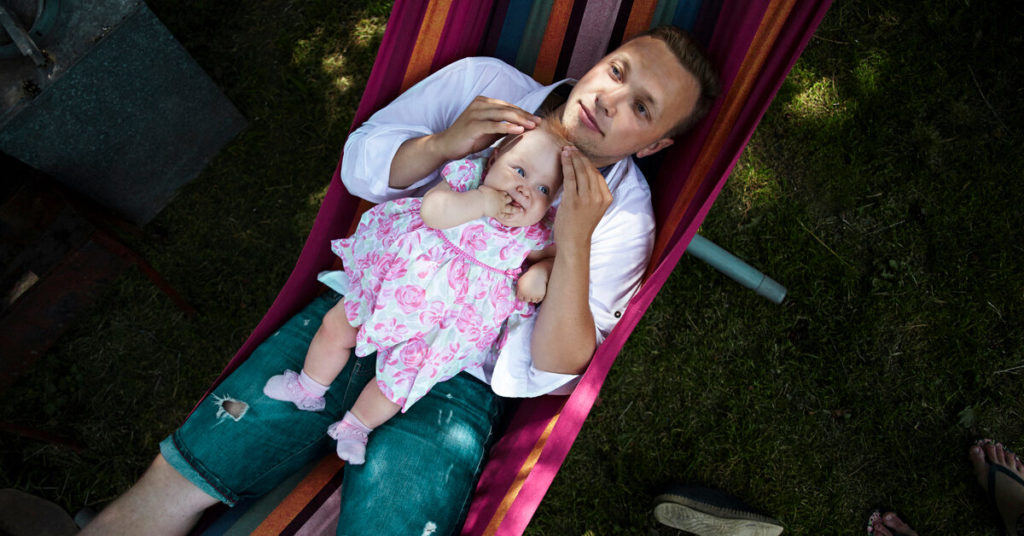
Human beings have come a long way over the last 300,000 years. Back in the good ol’ days, when our amygdala signaled a threat, i.e. a predator, or insatiable thirst or hunger, we could immediately do something about it (or not… ) and the feeling of anxiety would dissipate. But the triggers in our modern world have expanded tenfold since then, and many of our worries are far more complex… and not so easily managed.
In addition to worrying about keeping ourselves and our families safe from predators and making sure we have enough nourishment to sustain us (which, in and of itself, can be huge stressors), we also must contend with things like social media, pandemics and all types of illnesses and health issues, bullying, emotional distress, how well our kids are doing in school, addiction, friendship squabbles and so, so much more. It’s no wonder that in recent years anxiety has significantly increased in people under the age of 50.
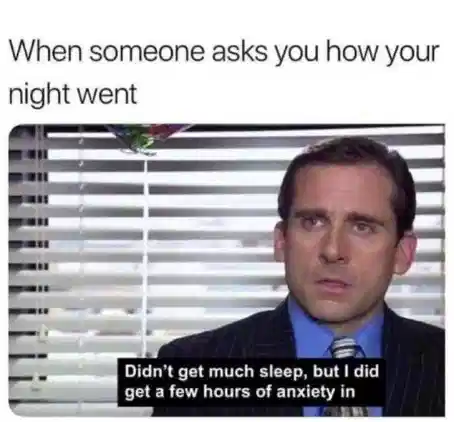
The list of things to worry about often feels endless and overwhelming, and it can seem like so much is out of our control. It certainly doesn’t help that, like a game of whack-a-mole, with every problem we manage, a new one seems to pop up in its place. This leads to so many of us living in a state of constant anxiety.
But as we all well know, this is certainly no way to live – and what we don’t want is to transfer this type of excessive and chronic worry to our children.
While it may feel exceptionally challenging, especially for those of us who struggle with anxiety ourselves, we have the power to change the way our children think about and deal with life’s stressors. As we learn to better manage our own worried thoughts and behaviors, we will ultimately teach our children healthier ways of coping with their own worries and fears.
And as parents (yes, even us anxious ones!), I think that’s something we can all find some relief in.
This helps me tremendously! Fellow diagnosed anxiety ridden first time mom to one little boy (1.5yrs old) my anxiety has caused unbearable stress in my now ending marriage. I definitely have implemented trying to not pass on my anxiety to my son (when my son was in the womb though he definitely felt my anxiousness) these tips and my therapy sessions all help me and I wanted to say THANK YOU for writing and sharing this information!!! Truly grateful!
Hi Jennifer!
I am so glad that this article was helpful — and I’m so sorry to hear about your struggles with anxiety, and how it has impacted your life. As you know, I definitely relate. Sending you so much peace this holiday season & beyond.
~ M